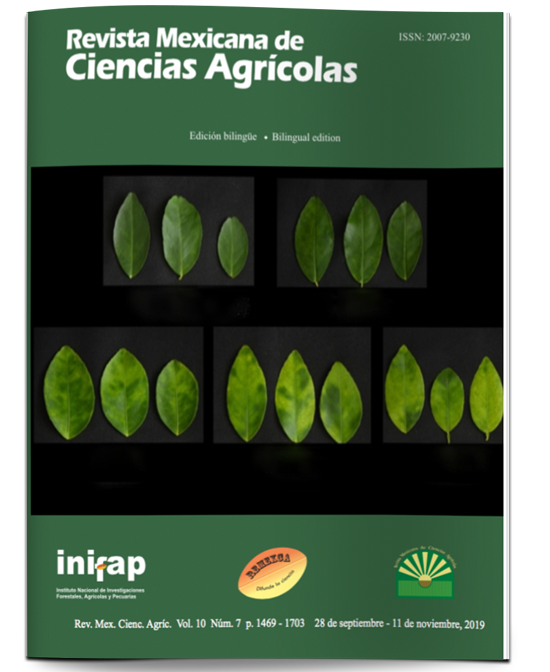Development of micropropagated plants of Agave americana var. Oaxacensis during greenhouse acclimatization
DOI:
https://doi.org/10.29312/remexca.v10i7.1625Keywords:
chlorophyll, fertirrigation, stomataAbstract
American agave var. Oaxacensis Gentry is a long-lived species that takes approximately 20 years to reach its reproductive stage. In Oaxaca, Mexico, this species is used as raw material to make distilled beverage mezcal. To increase the cultivation area with this species, it is proposed to propagate it in vitro, in addition to conventional propagation methods. Micropropagated plants must go through an acclimatization period, but environmental adaptation conditions, such as the substrate and nutrient supply, which affect the survival and magnitude of plant growth are unknown. The objective of the research was to evaluate the morphological characteristics of micropropagated plants of A. americana var. Oaxacensis that were tested for different substrate mixtures: peat-sand: 33.3% + 66.6% v/v, 66.6% + 33.3% v/v, 75% + 25% v/v; as well as, the supply of nutrients by fertigation with dilutions 0, 50 and 100% of the Steiner formulation, during 290 days of its acclimatization for which a completely randomized design with factorial arrangement was used, at the end of this period, of a total of 135 plants, 100% of these survived. The plants that reached a larger size had the following characteristics: 5.5-5.6 leaves, the greater leaf of 17.7 to 18.2 cm in length, 2.4 to 2.5 cm in width, the stem of 2.4 to 2.5 cm in diameter, and corresponded to those established in substrate with 66.6% peat + 33.3% sand v/v or 75% peat + 25% sand v/v, and which were also fertigated. The fertirrigated plants with 100% nutritive solution achieved larger size than the plants irrigated with only water.
Downloads
Published
How to Cite
Issue
Section
License
The authors who publish in Revista Mexicana de Ciencias Agrícolas accept the following conditions:
In accordance with copyright laws, Revista Mexicana de Ciencias Agrícolas recognizes and respects the authors’ moral right and ownership of property rights which will be transferred to the journal for dissemination in open access. Invariably, all the authors have to sign a letter of transfer of property rights and of originality of the article to Instituto Nacional de Investigaciones Forestales, Agrícolas y Pecuarias (INIFAP) [National Institute of Forestry, Agricultural and Livestock Research]. The author(s) must pay a fee for the reception of articles before proceeding to editorial review.
All the texts published by Revista Mexicana de Ciencias Agrícolas —with no exception— are distributed under a Creative Commons License Attribution-NonCommercial 4.0 International (CC BY-NC 4.0), which allows third parties to use the publication as long as the work’s authorship and its first publication in this journal are mentioned.
The author(s) can enter into independent and additional contractual agreements for the nonexclusive distribution of the version of the article published in Revista Mexicana de Ciencias Agrícolas (for example include it into an institutional repository or publish it in a book) as long as it is clearly and explicitly indicated that the work was published for the first time in Revista Mexicana de Ciencias Agrícolas.
For all the above, the authors shall send the Letter-transfer of Property Rights for the first publication duly filled in and signed by the author(s). This form must be sent as a PDF file to: revista_atm@yahoo.com.mx; cienciasagricola@inifap.gob.mx; remexca2017@gmail.
This work is licensed under a Creative Commons Attribution-Noncommercial 4.0 International license.



